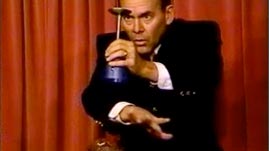Most substances exist in one of the three main states of matter—solid, liquid, or gas. Each of these states is characterized by certain observable properties. For example, a solid has a fixed volume and holds its shape, whereas a liquid has a fixed volume but takes on the shape of its container. A solid is rigid, while a liquid is fluid, meaning it can flow and move.
However, some substances have properties that make them difficult to categorize. For example, a gel seems to have components of both solids and liquids—it sort of holds its shape, but can also take on the shape of its container. So is it a solid or a liquid? As it turns out, a gel is actually a combination of both states; it is a mixture of a solid and a liquid.
A super absorbent polymer (a polymer is a long chain composed of repeating units of molecules) is a type of chemical able to create a gel by absorbing large amounts of water. One of the most common super absorbent polymers is sodium polyacrylate, which can absorb up to 800 times its weight in distilled water.
Sodium polyacrylate is usually found in powdered or granular form, where each strand of the polymer is tightly coiled. However, when the polymer is mixed with water, the water molecules are absorbed inside the polymer. The water molecules bond to the strands, causing them to swell and uncoil. However, the polymer has cross-links, meaning that the polymer strands form a web of intertwined molecules that acts like a sponge.
This web of molecules is what gives hydrated sodium polyacrylate the consistency of a gel. When the polymer is combined with water, the resulting mixture is mostly liquid held in a network of solid strands. In this video, the sodium polyacrylate starts off as a solid in powder form, but when mixed with the liquid milk, the result is a gel. This characteristic of super absorbent polymers makes them useful in many applications, such as in disposable baby diapers.

 Teachers' Domain is proud to be a Pathways portal to the National Science Digital Library.
Teachers' Domain is proud to be a Pathways portal to the National Science Digital Library.